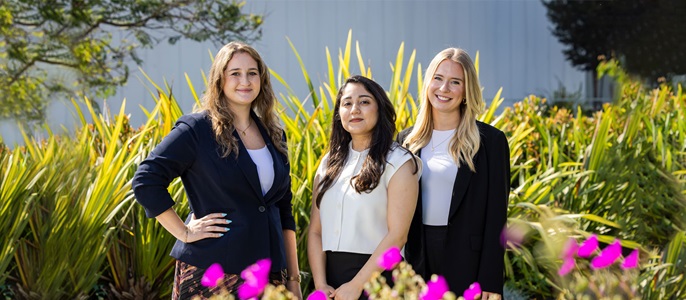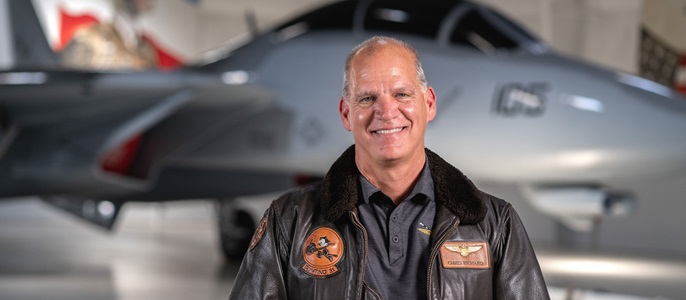Three early-career engineers are carrying the torch of a decades-long program.
From Cradle to Orbit

By Michelle A. Monroe
Ryan Keller and Ryan Bloodgood were just a few months old when they began their Northrop Grumman journey. In the 1990s, they attended the Launching Pad, Northrop Grumman’s on-site child care center at the company’s Space Park, California, site. There, they learned to walk and ride bikes just feet away from where their parents worked on programs vital to national security.
The Launching Pad fostered a strong community connection that led many kids to a lifelong love of science and engineering. Today, both are engineers at Space Park.
Making Connections
“When I walk by the Launching Pad now on my way to the gym, it’s a surreal feeling, like a long-lost nostalgia kicking in the back of my brain,” Ryan Bloodgood said.
Sheila Bloodgood, Ryan’s mom — an engineer who retired from the company in 2020 but has since returned as a part-time contractor — said she and her husband, also an engineer, encouraged a STEM environment for their kids, taking them to toy brick building competitions and science museums.
At the Launching Pad, with so many parents in the aerospace industry, there was a natural inclination toward science. Sheila even recalled one parent arranging a field trip to the Torrance airport so the kids could see airplanes up close.
“We loved the community that we built at Space Park, and we made connections with people that had kids the same age who had the same interests,” Sheila said.
Both sets of parents encouraged their kids to take math and science all through school to keep their options open.
“They joke that they blame us for not giving them other role models and that’s why they had to become engineers,” said Gina Keller, Ryan’s mom. “We kept stressing that no matter what you do, don’t opt out of science.”
Building Blocks Of Life
Both Launching Pad alumni say their parents’ careers showed them how they could build a life around engineering. Ryan Bloodgood, who went to Embry- Riddle Aeronautical University in Arizona and earned a bachelor’s degree in aerospace engineering, is now a systems engineer at Northrop Grumman. Ryan Keller, who earned his bachelor’s degree in electrical engineering from the University of California, Santa Barbara and his master’s from Vanderbilt University, works in the Digital Integrated Circuits and Electronics department at the company.
“It’s nice having parents who were part of the company because I can talk to them about work, and they understand. Suddenly all the stories I heard in high school have some context,” Ryan Keller said, remembering how his dad once described resolving a noise spike during testing. “My dad told me, ‘If you don’t understand something, figure it out. Pay attention and don’t give up.’ That sort of thing is encouraged at Northrop Grumman, and that’s why I like our culture.”
The lessons they learned as children made a big impact on them as students and now as employees at the place where it all began.
“My husband and I would have lunch with our kids at the Launching Pad and now that Ryan and I are working at Space Park at the same time, we can have lunch together on campus just like we did 30 years ago,” Gina said. “It’s been wonderful to watch him grow as a person and as an engineer. I’m so proud of him.”
Northrop Grumman’s culture encourages employees to share ideas and make connections that can foster lifelong interests and friendships, Sheila said.
“That mix of fun and community is what made working at Space Park special,” said Sheila. “I’ve always felt like my family was important to this company.”
Life at Northrop Grumman
Your work at Northrop Grumman makes a difference. Whether you want to design next-generation aircraft, harness digital technologies or build spacecraft that will return humanity to the moon, you’ll contribute to technology that’s transforming the world. Check out our career opportunities to see how you can help define possible.


